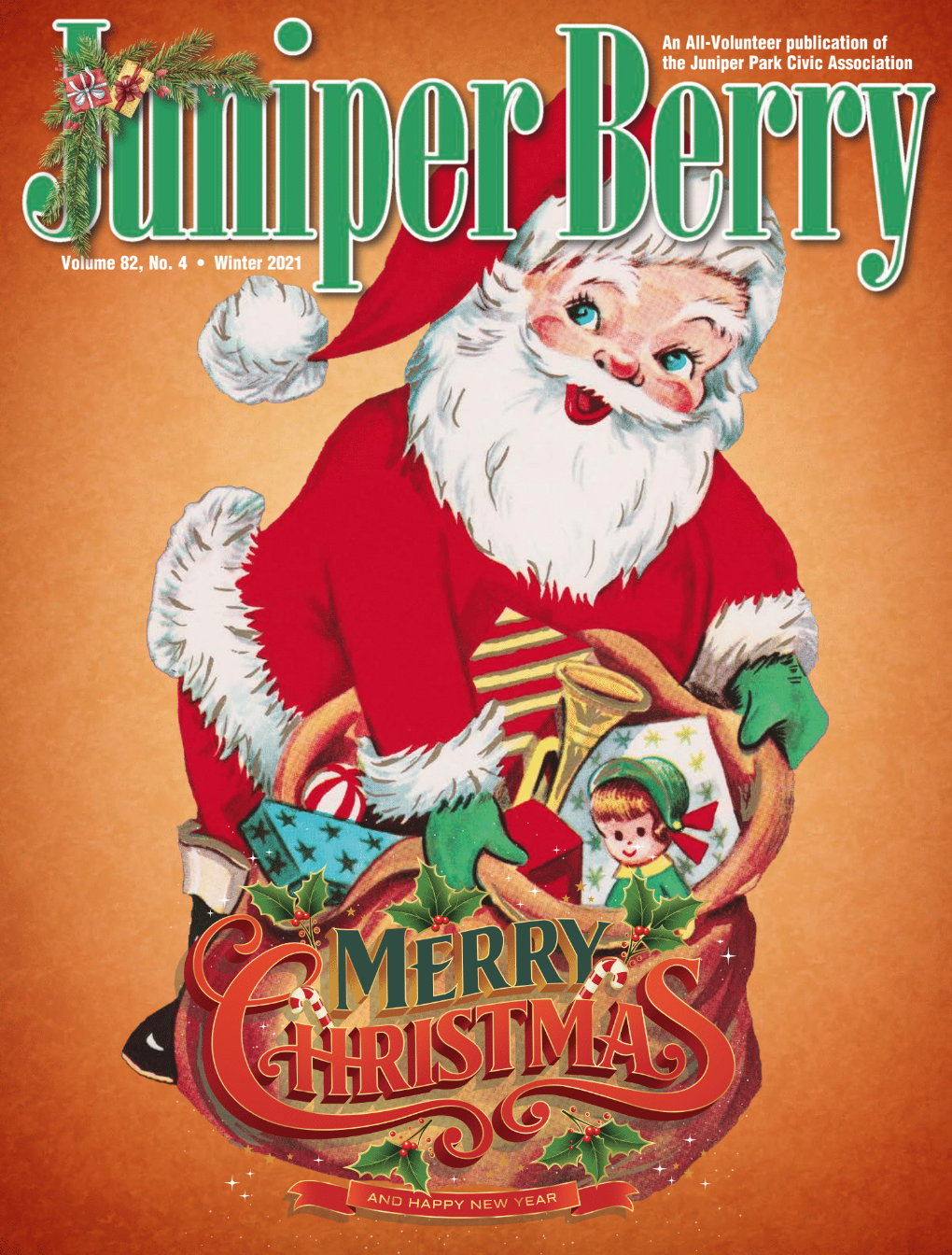We are all familiar with the classic description of Santa presented in “A Visit From St. Nicholas” an 1823 poem attributed to Clement Clarke Moore. As was explained in the December 2019 Juniper Berry, Moore no doubt was heavily influenced by a satirical passage from Washington Irving’s A History of New-York from the Beginning of the World to the End of the Dutch Dynasty, published in 1809 for the New York Historical Society.
However, two years before Moore’s updated version of Santa was made public, the poem “Old Santeclaus with Much Delight” was anonymously published and also likely inspired much of the imagery in the Moore poem.
The older poem was published in New York by William B. Gilley in 1821 as a small paperback book entitled The Children’s Friend: A New-Year’s Present to the Little Ones from Five to Twelve. The illustrations that accompanied it were the first representations of the Santa Claus figure as well as the first images to be reproduced lithographically in the United States.
Below is the poem in its entirety:
Old Santeclaus with Much Delight
Anonymous, 1821
Old Santeclaus with much delight
His reindeer drives this frosty night,
O’er chimney-tops, and tracks of snow,
To bring his yearly gifts to you.
The steady friend of virtuous youth,
The friend of duty, and of truth,
Each Christmas eve he joys to come
Where love and peace have made their home.
Through many houses he has been,
And various beds and stockings seen;
Some, white as snow, and neatly mended,
Others, that seemed for pigs intended.
Where e’er I found good girls or boys,
That hated quarrels, strife and noise,
I left an apple, or a tart,
Or wooden gun, or painted cart.
To some I gave a pretty doll,
To some a peg-top, or a ball;
No crackers, cannons, squibs, or rockets,
To blow their eyes up, or their pockets.
No drums to stun their Mother’s ear,
Nor swords to make their sisters fear;
But pretty books to store their mind
With knowledge of each various kind.
But where I found the children naughty,
In manners rude, in temper haughty,
Thankless to parents, liars, swearers,
Boxers, or cheats, or base tale-bearers,
I left a long, black, birchen rod,
Such as the dread command of God
Directs a Parent’s hand to use
When virtue’s path his sons refuse.
It is clear what was borrowed: Santa arrives in snowy winter, drives a reindeer and sleigh, arrives on Christmas Eve rather than on December 6, the traditional feast day of Saint Nicholas, and in the images, he is depicted wearing red clothing. He also leaves gifts for nice children but leaves a rod for the parents to mete out punishment to naughty children. In Moore’s poem there were only good boys and girls, however!




